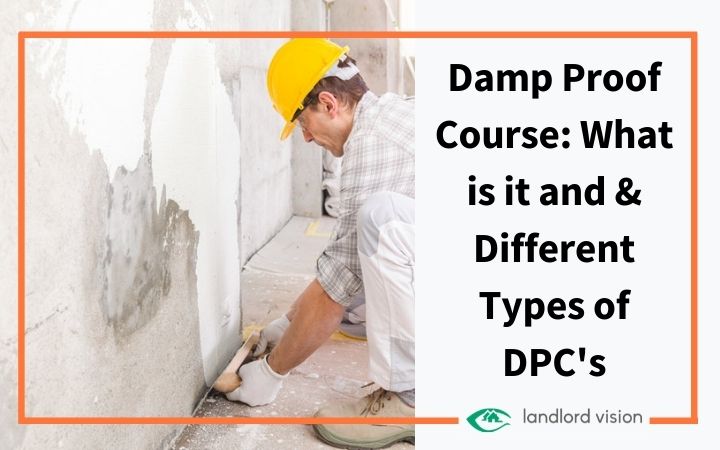
Water damage may happen when you least expect it. With this, it is essential to be prepared for the scenario and the potential damage it may inflict on your property. Having a damp proof course or DPC is the best way to protect your property.
What is a Damp Proof Course (DPC)?
Many people would not know what a damp-proof course is. A damp proof course is essential to install, particularly at the basement level or at the building’s foundation upon construction. It prevents rising of moisture through the floors and walls.
Excessive moisture can lead to severe damage to your property. It makes sense to know some damp-proof treatments you can employ if this scenario happens. Effective DPC guarantees repelling the water from the ground.
Homeowners must invest in a damp-proof course. For your information, excess moisture is damaging because it affects the plaster and may cause discoloration. It may also cause the timbers to dry or wet rot. The damp-proof course must be 150mm above the ground. Plastic DPC or bitumen are the materials commonly used as mortar courses. Otherwise, if the ground level rises above the DPC level after a renovation, expect the moisture will penetrate.
Different Types of Damp Proof Courses
Installing a damp-proof course is the best way to protect your property. It works as a protective barrier so that the damp would not rise from the ground. Here are some damp-proof courses you may choose.
Damp Proof Course (DPC) Injection
Installing this damp-proof course involves injecting a liquid or cream into the wall. It repels the water from the ground so that it does not rise above the DPC level. To inject the chemical requires drilling holes in the wall. The chemical is silicon-based commonly used for masonry works. It works better than a solid DPC.
Electro Osmotic Damp Proofing Course
Another DPC type you may choose is the electro-osmotic. It works effectively if the wall is filled with thick rubble stone. This damp treatment pushes down the water back to the ground using a positive electric charge. Older and historical buildings are most likely to benefit from an electro-osmotic DPC system.
Damp proof membrane
It is essential in installing the damp-proof course to protect your property from potential dampness issues. The damp-proof membrane is laid under the concrete slab. It prevents moisture from seeping into the concrete, making it free from dampness. This proofing technique is best if the walls are unfinished or not plastered.
Pressure grouting
This is a method of damp proof course that uses sand, cement, and water combined to fill any cracks in the structure. It varies from mortar because grout is not spread through the cracks. To fill wide cracks, the grout needs to be poured with high pressure. This type of damp-proof course works well when repairing hardened concrete or improving the bearing capacity. It also prevents seepage in water cut-offs.
Cavity wall damp proof course
You can install a cavity wall damp proof course as insulation. It works to ensure continuous air space between the two parallel walls. Metal is used to tie the wall to maintain the required gap to prevent dampness. However, sometimes the gap in between the two walls accumulates moisture that eventually leads to dampness.
Chemical damp proof course
This is a damp-proof technique in which a water-repelling chemical is injected. It creates a vertical or horizontal barrier so that the movement of moisture is prevented. A chemical damp proof course is necessary if the present DPC has deteriorated, allowing moisture to rise and seep into the construction.
Does my Property Need a Damp-proof Course?
When does your property need a damp-proof course? Not all property owners have experience with installing a damp proof course. That is why they don’t know what to do when dampness becomes a major problem in the property. If this happens, know that it’s probably time to consider installing a damp proof course.
Here are some signs you need to consider installing a DPC.
- Check the interior walls for any formation of black mold.
- Watermarks form on the walls because of penetrating or rising dampness.
- Peeling of plaster on the wall is another sign that there’s a need to install a damp-proof course.
- If any wood in the structure is deteriorating, it has most likely come into contact with moisture. Without a damp-proof course, it will eventually rot.
It is essential to pinpoint the dampness issue before it leads to serious problems. Without damp proofing treatment, the moisture will pass through the inner walls. As soon as you notice the dampness on the wall or in any part of the structure, the best thing to do is call a professional.
Cost Of Having A Damp Proof Course
Hiring a professional to install a damp-proof course would cost a considerable amount of money. The cost of installing a DPC varies depending on the scope of work or the type of damp to fix. The average cost of damp proofing an interior wall is about $90 per square meter.
A DPC is a part of the construction process of any building. As mentioned earlier, the required depth of the damp proof course is 150mm above the ground. So, if you’re constructing a new home, make sure it has a DPC. This way, you would not encounter a moist issue in the long run.
Take Away
Seeking professional help is the best thing to do if you encounter a damp issue. A professional can help you identify the issues in your property that are causing dampness and can provide professional advice on the best methods for fixing the issue. You can contact Advance Damp for help. They can check your property and advise you on what to do.



